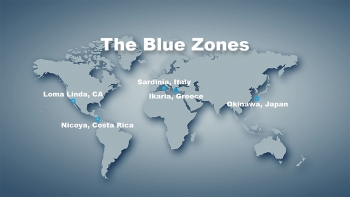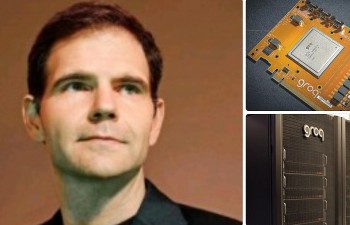Can China Extend Human Lifespan to 150 Years?
 Where Are "5 Blue Zones" With A Longest Life Expectancy in the World Where Are "5 Blue Zones" With A Longest Life Expectancy in the World |
 10 Longevity Secrets of the Japanese People 10 Longevity Secrets of the Japanese People |
 Body Early Warning Signs Ten Years Before Death and Four Markers of Life Expectancy Body Early Warning Signs Ten Years Before Death and Four Markers of Life Expectancy |
The idea of dramatically extending human life has captivated scientists, philosophers, and governments for centuries. In the 21st century, this ambition is no longer confined to science fiction. A bold new chapter in longevity research is unfolding, and China is positioning itself at the forefront. With life expectancy nearing 80 and demographic pressures mounting, China’s investments in biotechnology, AI, and anti-aging research point toward an extraordinary goal: enabling humans to live up to 150 years.
This article investigates the feasibility of such a goal from all angles—scientific, cultural, technological, strategic, and ethical. Can China really achieve such a biological leap? What would it take? And what would it mean for the rest of the world?
 |
| The 150-Year Timeline |
1. China’s Longevity Landscape: From 79 to 150
China’s life expectancy reached 79.3 years in 2023, surpassing the global average by about five years. However, this is just the beginning. In internal strategy discussions and global forums, Chinese leaders have floated ambitions of a much longer human lifespan. In 2025, a leaked conversation between Xi Jinping and Vladimir Putin captured attention when the two leaders discussed the potential of humans living to 150 through organ replacement and biotech advances.
This ambition aligns with China’s demographic needs. With its aging population and shrinking workforce, prolonging healthspan and reducing age-related diseases have become strategic imperatives. China’s approach to this challenge is national in scale and multi-sectoral in structure, involving state labs, private firms, defense research institutions, and global partnerships.
2. The Science of Radical Life Extension
2.1 Life Expectancy vs. Maximum Lifespan
Average life expectancy is influenced by public health, disease prevention, and healthcare systems. Maximum lifespan, on the other hand, is rooted in biology. Most humans do not live past 120, with the oldest verified person, Jeanne Calment, dying at 122. Extending this ceiling by another 30 years would require interventions at the genetic, cellular, and systemic levels.
2.2 Biological Targets for Longevity
To reach 150, scientists need to address the hallmarks of aging:
-
Telomere attrition: Protecting or elongating telomeres to preserve chromosome integrity.
-
Cellular senescence: Removing non-dividing, dysfunctional cells.
-
Epigenetic drift: Resetting gene expression profiles that degrade over time.
-
Mitochondrial dysfunction: Revitalizing cellular energy systems.
-
Stem cell exhaustion: Replenishing regenerative capacity.
-
Protein misfolding: Preventing toxic aggregation in the brain and other organs.
Each of these areas is under active investigation globally, and China is funding extensive research across all of them.
2.3 Technological Enablers
Several technological approaches show promise:
-
Senolytic drugs to eliminate senescent cells.
-
Organ printing and regeneration to replace aged organs.
-
CRISPR gene editing to repair age-related mutations.
-
Epigenetic reprogramming, such as using Yamanaka factors to reverse cellular age.
-
AI-driven biomarker analysis for early detection and personalized interventions.
-
Synthetic biology to engineer biological parts that resist aging.
Some therapies have shown success in animal models, including lifespan extension in mice by 20–30%. Translating these into humans is the next frontier—and a primary focus in Chinese labs.
3. China’s Strategy: A National Longevity Initiative
3.1 State-Led Research and Funding
China has established major programs like the "Healthy China 2030" initiative and reportedly the "981 Project," blending defense, medical, and biotechnological interests. These programs support regenerative medicine, anti-aging pharmaceuticals, organ transplantation, and wearable health monitoring.
Longevity research has been linked to military hospitals and defense tech units, suggesting a dual-use orientation: healthy soldiers and long-lived leaders are strategic assets.
3.2 Public-Private Innovation Ecosystem
China’s biotech sector is booming. Firms like Lonvi Biosciences claim their senolytic capsules can push lifespan to 150. While such claims are controversial, the fact that they are backed by serious venture capital and sometimes state subsidies shows the scale of ambition.
Vast human datasets, a flexible regulatory environment, and integration with national AI strategy give Chinese firms advantages that Western competitors often lack.
3.3 The Role of AI and Big Data
AI and big data are central to China's longevity strategy:
-
Predictive analytics: Identify risk factors for aging-related diseases.
-
Drug discovery: AI helps identify new anti-aging compounds faster than traditional methods.
-
Personalized medicine: Leveraging national health records to tailor interventions by genotype and biomarker profile.
China’s ability to deploy AI across populations of hundreds of millions gives it a unique advantage in modeling, testing, and refining longevity strategies.
4. Cultural Roots and Political Narrative
Longevity is deeply embedded in Chinese culture. Ancient Taoist practices emphasized harmony, diet, breathwork, and herbal medicine to preserve life. Historical figures like Li Ching-Yuen, said to have lived over 200 years, are cultural icons.
In modern China, longevity is not just a personal goal but a national narrative. It fits into Xi Jinping’s vision of "national rejuvenation"—a strong, prosperous China with world-leading science and a healthy, vigorous population.
Living longer also appeals to traditional values of filial piety and societal stability. A healthy elderly population is viewed not as a burden but as an asset, especially in a society where intergenerational care is a core value.
5. Skepticism and Scientific Constraints
While ambitions are high, the road to 150 is fraught with barriers:
5.1 Biological Complexity
-
Many anti-aging interventions work in mice but fail in humans.
-
Aging is multifactorial; solving one mechanism (e.g., telomere shortening) doesn’t stop others (e.g., immune senescence).
-
Evolutionary biology suggests aging is deeply embedded in our species; pushing far beyond natural lifespan may have unforeseen tradeoffs.
5.2 Social and Economic Challenges
-
Longer lives require pensions, housing, food, and healthcare over an extended period.
-
Social systems may become unsustainable unless healthspan keeps pace.
-
If access to anti-aging technologies is uneven, new inequalities may emerge.
5.3 Ethical and Regulatory Questions
-
Is aging a disease? Regulatory bodies differ.
-
Who gets access to life-extension therapies: elites only, or everyone?
-
Will dramatically longer lives affect creativity, ambition, and the meaning of life?
6. Milestones Toward 150: What’s Realistically Achievable?
A phased roadmap might look like:
-
By 2035: Universal health monitoring, healthspan-focused medicine, early use of senolytics, 85-year average lifespan in urban areas.
-
By 2050: Organ regeneration, AI-curated genetic therapies, 100-year lifespans common among the upper-middle class.
-
By 2080: Epigenetic reprogramming, neurodegeneration reversal, 120+ lifespan becoming routine among users of advanced therapies.
-
Beyond 2100: Radical interventions that make 150 plausible, if not yet common.
This scenario assumes no catastrophic setbacks, sustained funding, and public trust.
7. Global Implications and Power Shifts
If China succeeds first in achieving robust lifespan extension, it could:
-
Become a global hub for medical tourism.
-
Shape international bioethics standards.
-
Create new geopolitical leverage in biotech diplomacy.
-
Accelerate wealth and health gaps between nations.
Conversely, failure to deliver on longevity promises could undermine trust in China's scientific credibility or spark international criticism of overhyped claims.
Conclusion: Ambition vs. Reality
China's dream of enabling people to live to 150 years reflects more than just scientific aspiration. It’s a fusion of national strategy, demographic necessity, cultural tradition, and technological ambition. The resources are vast, the political will is evident, and the science is progressing.
But the obstacles are equally formidable. Biology does not easily yield to ambition. Skepticism from the global scientific community is warranted. Yet if breakthroughs do come—from China or elsewhere—they will reshape not just individual lives, but economies, societies, and civilizations.
China may not reach 150 in the next few decades. But its push is forcing the world to take the question seriously. And in that alone, it is already changing the future of human life.
Frequently Asked Questions (FAQs)
Q1: Is it biologically possible for humans to live to 150?
While no human has yet lived past 122, some scientists believe it's theoretically possible—if we solve multiple aging mechanisms. But no one knows for sure yet.
Q2: Has any current technology shown the potential to extend human life dramatically?
Many interventions (like senolytics and genetic editing) have shown promise in animal models, but none have yet proven effective at dramatically extending human lifespan in people.
Q3: Why is China so interested in longevity research?
Because of its aging population, demographic pressures, and desire to lead in biotech innovation. Longevity is also a cultural and strategic goal for China.
Q4: Are Chinese companies exaggerating claims about living to 150?
Some claims are likely exaggerated for marketing or investment appeal. Many scientists urge caution until solid, peer-reviewed evidence exists.
Q5: Could only the wealthy benefit from life-extension technologies? That's a major concern. If not handled carefully, these technologies could worsen inequality both within and between countries.
Q6: Will extending life mean people are old longer?
Ideally, no. The goal is to extend "healthspan," not just lifespan—so people stay healthy and productive longer, not just live longer in frailty.
Q7: How does China's approach compare to the West?
China integrates state planning, big data, AI, and massive investment in a way that's more centralized than Western democracies, potentially accelerating progress—but also raising concerns about transparency and ethics.
























